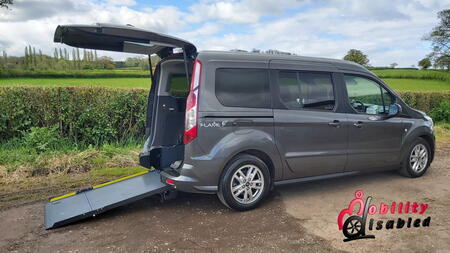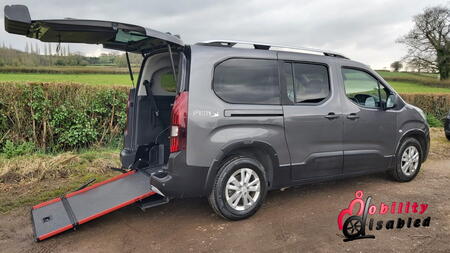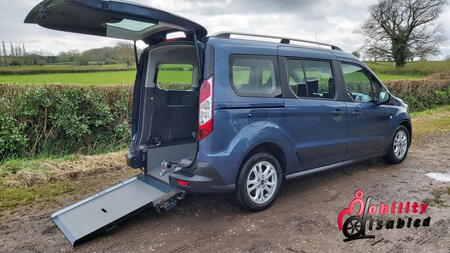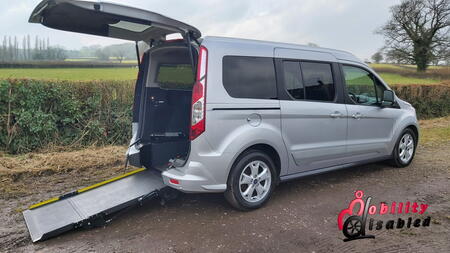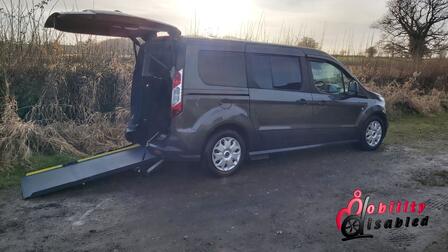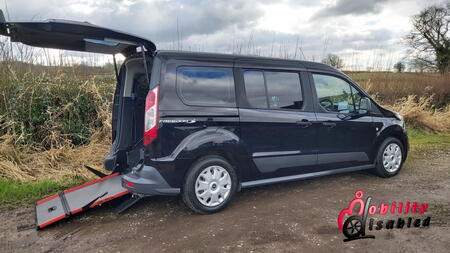Buying a wheelchair car shouldn’t be difficult, and we hope to make it as easy as possible for you to get out and enjoy the freedom of the road.
Here are a few answers to frequently asked questions about wheelchair cars, but please get in touch if you require any help.
See also:
Do WAVs need an MOT?
Can Blue Badge holders park anywhere?
Driving after lockdown
What do those dashboard warning lights mean?
Checking Car Fluid Levels
Disabled Parking Enforcement at UK Supermarkets
Is It Legal For Deaf People To Drive A Car?
Finding Your Perfect Accessible Holiday
Wheelchair Accessible Cars
Disabled Cars and Air Conditioning
Wheelchair Car Insurance
VAT For Disabled Vehicles
How to register and tax your used WAV
How Do Wheelchair Securing Straps Work?
AdBlue and Wheelchair Access Vehicles
How to refuel your wheelchair car
ULEZ and Wheelchair Car
Advantages of a Wheelchair Accessible Vehicle
Which do you choose? A wheelchair accessible car or a wheelchair accessible van?
Wheelchair Vehicles With Lowered Floor
It’s surprising just how many vehicles can be converted to suit those with disabilities and even take wheelchairs, but obviously, some are more suited than others.
Vehicles with a higher roof clearance are obvious candidates for conversion to accommodate wheelchairs, and we tend to stock a lot of these types of vehicles such as the Mercedes Sprinter which affords lots of load space and the ability to get in and out using a motorised wheelchair lift and remote operated rear doors.
These are a perfect solution for many as it offers independence to the disabled driver who can, with most conversions, operate the vehicle themselves as many of these conversions allow the wheelchair user to drive from the up-front position of the chair.
A high-quality conversion will make it easy for most people to operate with ease, and so vehicles like this are often the perfect WAV (wheelchair accessible vehicle) and will provide many years of use.
Of course, these are at the larger end of the spectrum, and other wheelchair cars are just as practical.
The Peugeot Partner is a smaller car that still has a surprising amount of internal space even though it probably doesn’t look like a perfect candidate for wheelchair cars.
Usually with a manual ramp, these do require a little more effort to operate, but they’re still a very capable car that offers plenty of space for passengers, too.
This should be fairly simple to define, surely a disabled car that can take a wheelchair is all that’s needed to define it as “wheelchair accessible”?
However, legislation has been put in place to ensure that vehicles with wheelchairs can be operated safely. They do, after all, have to transport people on the highway so shoddy conversions should not be acceptable.
The basic requirements as per the EU regulations is:
“a vehicle of category M1 constructed or converted specifically so that they accommodate one or more persons seated in their wheelchairs when travelling on the road".
Category “M” is a broad category that describes a vehicle as “Motor vehicles with at least four wheels designed and constructed for the carriage of passengers.”
“M1” extends this to: “Vehicles designed and constructed for the carriage of passengers and comprising no more than eight seats in addition to the driver's seat.”
So this very clearly sets the limits on the size and capacity of vehicles that can be classified as wheelchair accessible.
But why set these restrictions?
People in certain circumstances, such as claiming mobility allowance or displaying a blue badge are able to claim tax relief and other benefits.
For example, “blue badge holders” are able to park on double yellow lines (although only if it’s safe to do so), and so it’s essential that vehicles used are not too big, too bulky and likely to cause issues for other users.
Here are a few answers to frequently asked questions about wheelchair cars, but please get in touch if you require any help.
See also:
Do WAVs need an MOT?
Can Blue Badge holders park anywhere?
Driving after lockdown
What do those dashboard warning lights mean?
Checking Car Fluid Levels
Disabled Parking Enforcement at UK Supermarkets
Is It Legal For Deaf People To Drive A Car?
Finding Your Perfect Accessible Holiday
Wheelchair Accessible Cars
Disabled Cars and Air Conditioning
Wheelchair Car Insurance
VAT For Disabled Vehicles
How to register and tax your used WAV
How Do Wheelchair Securing Straps Work?
AdBlue and Wheelchair Access Vehicles
How to refuel your wheelchair car
ULEZ and Wheelchair Car
Advantages of a Wheelchair Accessible Vehicle
Which do you choose? A wheelchair accessible car or a wheelchair accessible van?
Wheelchair Vehicles With Lowered Floor
What cars can be converted to mobility vehicles?
It’s surprising just how many vehicles can be converted to suit those with disabilities and even take wheelchairs, but obviously, some are more suited than others.
Vehicles with a higher roof clearance are obvious candidates for conversion to accommodate wheelchairs, and we tend to stock a lot of these types of vehicles such as the Mercedes Sprinter which affords lots of load space and the ability to get in and out using a motorised wheelchair lift and remote operated rear doors.
These are a perfect solution for many as it offers independence to the disabled driver who can, with most conversions, operate the vehicle themselves as many of these conversions allow the wheelchair user to drive from the up-front position of the chair.
A high-quality conversion will make it easy for most people to operate with ease, and so vehicles like this are often the perfect WAV (wheelchair accessible vehicle) and will provide many years of use.
Of course, these are at the larger end of the spectrum, and other wheelchair cars are just as practical.
The Peugeot Partner is a smaller car that still has a surprising amount of internal space even though it probably doesn’t look like a perfect candidate for wheelchair cars.
Usually with a manual ramp, these do require a little more effort to operate, but they’re still a very capable car that offers plenty of space for passengers, too.
What is the definition of a wheelchair accessible vehicle?
This should be fairly simple to define, surely a disabled car that can take a wheelchair is all that’s needed to define it as “wheelchair accessible”?
However, legislation has been put in place to ensure that vehicles with wheelchairs can be operated safely. They do, after all, have to transport people on the highway so shoddy conversions should not be acceptable.
The basic requirements as per the EU regulations is:
“a vehicle of category M1 constructed or converted specifically so that they accommodate one or more persons seated in their wheelchairs when travelling on the road".
Category “M” is a broad category that describes a vehicle as “Motor vehicles with at least four wheels designed and constructed for the carriage of passengers.”
“M1” extends this to: “Vehicles designed and constructed for the carriage of passengers and comprising no more than eight seats in addition to the driver's seat.”
So this very clearly sets the limits on the size and capacity of vehicles that can be classified as wheelchair accessible.
But why set these restrictions?
People in certain circumstances, such as claiming mobility allowance or displaying a blue badge are able to claim tax relief and other benefits.
For example, “blue badge holders” are able to park on double yellow lines (although only if it’s safe to do so), and so it’s essential that vehicles used are not too big, too bulky and likely to cause issues for other users.
Customer Reviews
See All
Thank you so much for the proactive, responsive and supportive way you handled our viewings and sale. A very smooth and professional process throughou... Read More
Amjad Darr
Fantastic company family run buisness easy to deal with and excellent vehicle our vehicle come with a 12 month warranty with no additional charge wow!... Read More

 Wheelchair CITROEN
Wheelchair CITROEN Wheelchair FORD
Wheelchair FORD Wheelchair PEUGEOT
Wheelchair PEUGEOT